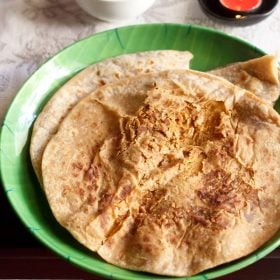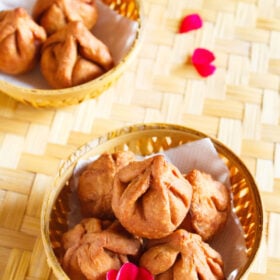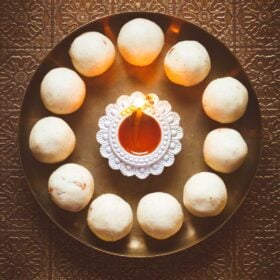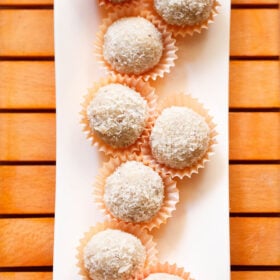Patoli (plural: Patoleo) or Patholi are sweet rice rolls wrapped in turmeric leaves.This is a very common dish Ganesh Chaturthi Celebrations in the Goa and Konkan regions of western India. Preparing and cooking this dish is laborious due to its unique technique. However, the ingredients used in it are simple and basic. It is vegetarian and since rice flour is the main ingredient, this dish is also gluten-free.
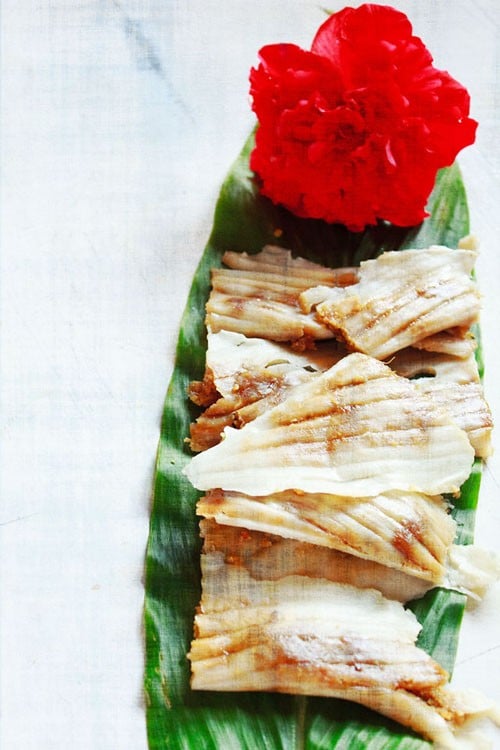
What is Patoli
Rice rolls are stuffed with fresh coconut and jaggery and then steamed to create a dish called Patoli or Patoleo. The filling mixture can be flavored with spices such as cardamom powder, nutmeg powder and dry fruits or nuts.
What’s special about Patoli is that the cooking method involves steaming these rice rolls with fresh turmeric leaves. July to September are the months when fresh turmeric leaves are plentiful in the markets of Goa and Konkan regions in India.
When patoli rolls are steamed in these leaves, they impart a beautiful sweet and floral aroma, making the dish even more desirable and delicious. Patoleo is usually made during Gauri and Ganesha festivals in the region.
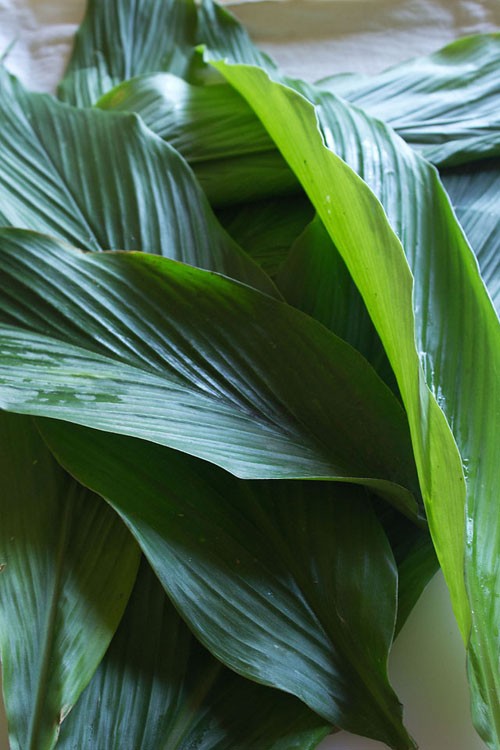

Christian communities spread rice paste on turmeric leaves and cook patoli in traditional steamers during harvest festivals.
Some sweets and desserts in Indian food are rich in fat and sugar. Patoli is a welcome change!
Thin and soft steamed rice lids stuffed with a heavenly mixture of coconut and melted jaggery, filled with the aroma of spices and turmeric leaves.
About this recipe
My mom also makes patoli, this is just her recipe. She uses a non-fermented batter that she makes from scratch by soaking and grinding rice.
I took the easy way out and used fine rice flour for this dish. Patoli tastes similar to Modak Besides the scent of turmeric leaves.
There are several variations of this delicious sweet dish in Indian cuisine. A similar variant of Ella Ada is made in Kerala using plantain leaves instead of turmeric leaves.
In Odisha, another variation called Enduri Pitha is made with a coating of fermented urad dal and rice batter, stuffed with a sweetened paneer filling and steamed in turmeric leaves.
As I mentioned before, the fresh turmeric leaves used to steam these sweet rice rolls make all the difference. This is definitely Patoli’s unique selling point.
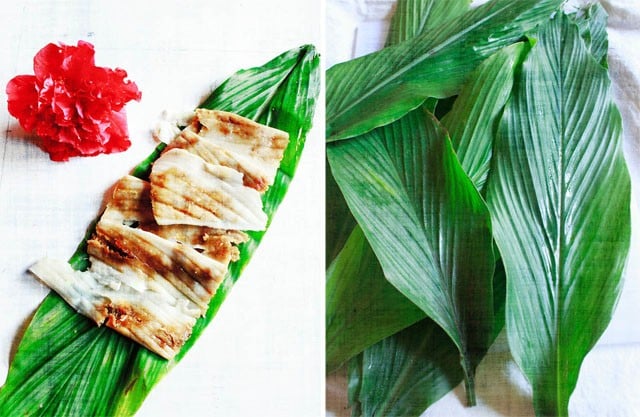

You'll know it when you steam these delicacies because your kitchen will be filled with these divine aromas. If you can’t get turmeric leaves, steam the patoleo in banana leaves.
Turmeric leaves bring flavor and a lovely aroma to any dish. Therefore they are used to steam food or added to rice and sweet dishes.sometimes i do idli Steamed in these fragrant leaves.
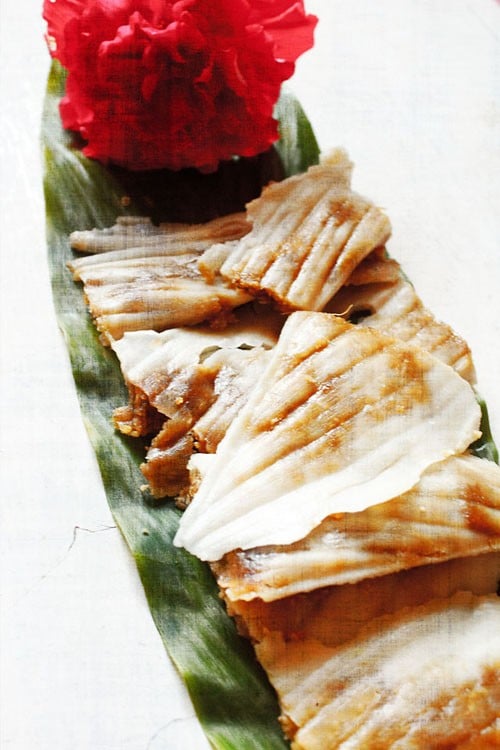

The process of preparing patoli requires a lot of patience and effort. But in the end, you'll find it's all worth it. Another reason I love this delicious treat is that it's vegan, gluten-free, and oil-free, making it a healthier sweet option.
Step-by-step guide
How to make patoli
Prepare batter
1. In a saucepan or bowl, combine 2 cups rice flour and 1/2 teaspoon salt with about 1.5 to 2 cups water to make a thick batter.The batter should be thicker than the batter dosa batter.
It should not be runny when applied to the leaves. Depending on the quality of the rice flour, you can add less or more water than I added in the recipe.
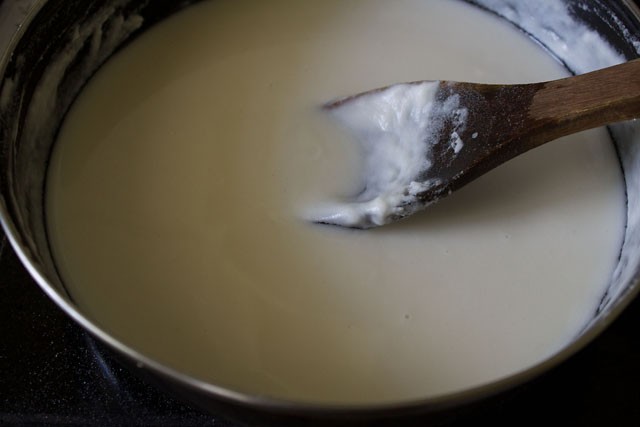

Make sweet filling
2. In a plate or bowl, mix 2 cups of freshly grated coconut, 1.5 to 2 cups of jaggery powder, 1 teaspoon of green cardamom powder and 1 to 2 pinch of grated nutmeg.
Please note that I used fine jaggery powder. If you have finely chopped jaggery, cook it along with coconut and cardamom powder on medium flame for 2 to 3 minutes.
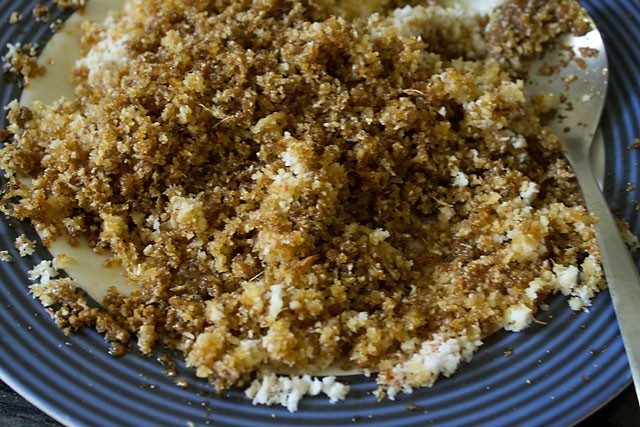

Mark Patoli
3. Now, rinse 8 to 10 large turmeric leaves or 18 to 20 small turmeric leaves. Dry them. Cut the stems from the leaves.
Remove each leaf and gently crack the midrib of each leaf with a pestle. This helps to roll up the leaves easily. You can also use a knife to scrape away the thick central vein.
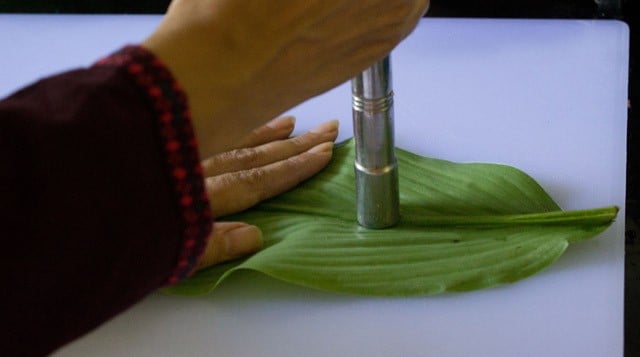

4. Spread rice paste on the leaves. Cover the leaves intact.
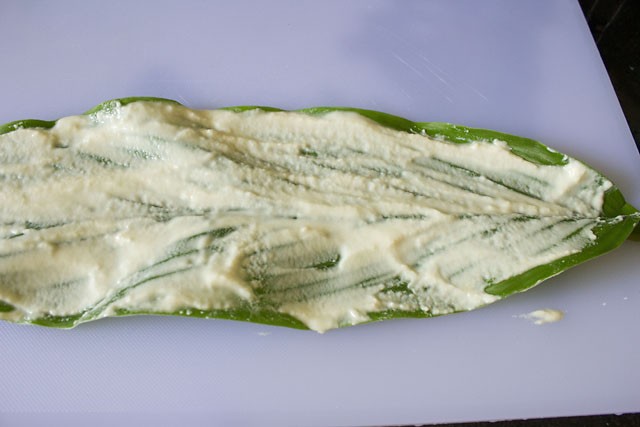

5. Place the coconut sugar filling in the center of the leaf.
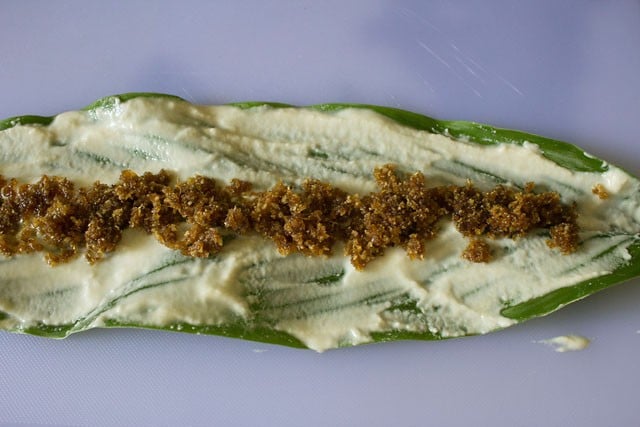

6. Fold one side down and press the edges. You can fold the leaves vertically or horizontally.
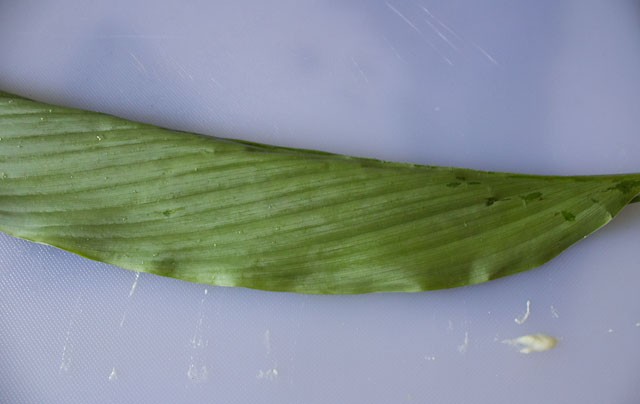

7. Since my leaves are very long, I cut the leaves into 2 or 3 parts. If you have small leaves, you can keep them intact.
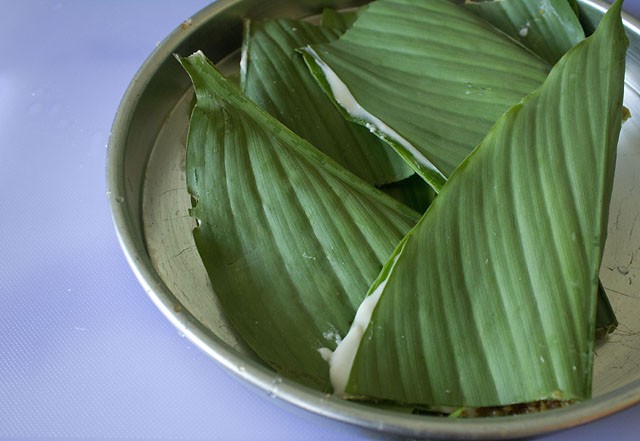

Steam Patoleo
8. Place the stuffed leaves on the idli steamer rack or any steamer lid or rack.
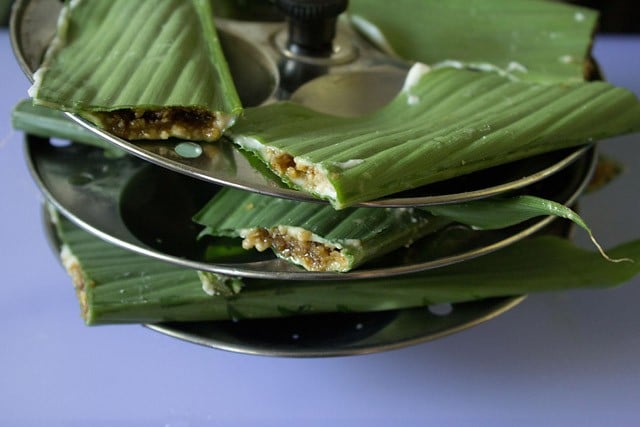

9. Steam for about 10 to 12 minutes or until cooked. Take it out after steaming.
You can use a pressure cooker or an idli pot for steaming. If you have a small steamer, you will have to repeat the entire process. Add about 1.5 to 2 cups of water while steaming.
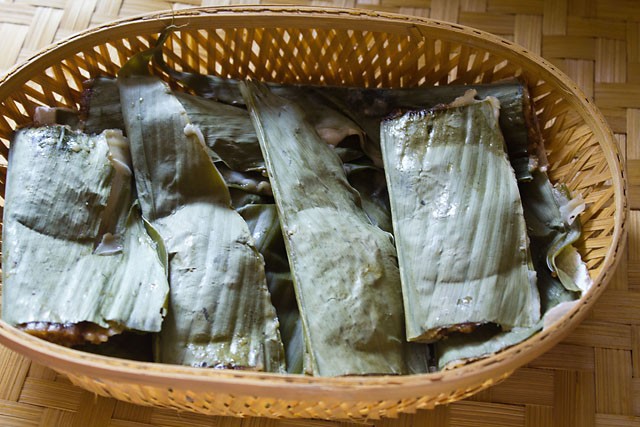

10. Once warm, gently remove the turmeric leaves from the steamed roll and serve. Patoli can be eaten plain, drizzled with some ghee, or served with coconut milk or milk.
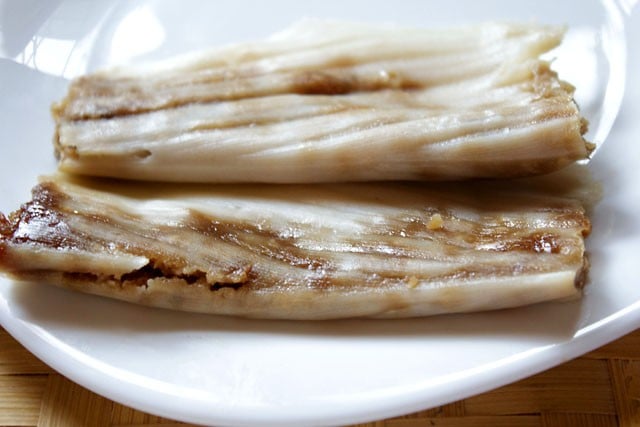

My loss, your gain
One day, while making Patoli, I got a call from someone and I had to step out of my house due to an emergency. I saved some patoleo to steam and told my sister to check the batch before I got back. My sister did prepare the remaining rolls but stacked them one on top of the other.
Due to the steam, all the patoli rolls stick together. It was very difficult to separate them and it took us a long time to get some whole ones out that I could use to take pictures. Amid this chaos, it was late and dark. So, I had to deal with some not-so-good shots!
I hope you learned from this episode to never stack freshly steamed patoli rolls on top of each other! But please go ahead and make this dish at home. Your family will thank you for it. This is my guarantee!
Expert Tips
- Adjust batter consistency: If the batter becomes thinner, you can add more rice flour. If the batter is too thick, add more water.
- Jaggery dosage: Depending on your taste and taste preference, you can adjust the sweetness of the filling by adding less or more jaggery.
- Turmeric Leaf Substitutes: If you wish, you can replace the banana leaves with turmeric leaves.
- Scalability: This recipe can be scaled to make small or multiple servings.
More Ganesh Chaturthi recipes to try!
candy recipes
candy recipes
Lado Recipe
Be sure to rate the recipe in the recipe card or leave a comment below if you've already made it. For more vegetarian inspiration, Sign up Get my email or follow me Instagram, Youtube, Facebook, interest or Twitter.
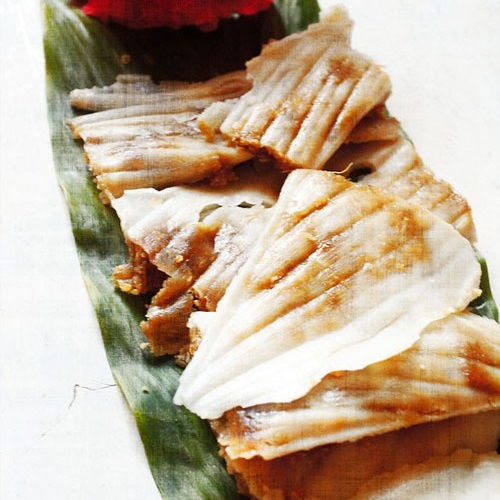

Patoleo Recipe | Patoleo (Steamed Rice Rice Roll)
Patholi are steamed rice rolls stuffed with a fresh coconut and jaggery mixture. The outer layer is made of rice batter and the sweet filling is made of coconut, jaggery and optional flavorings or nuts.
Preparation time 1 Hour
cooking time 30 minute
total time 1 Hour 30 minute
Prevent screen from dimming while making recipes
Prepare batter
Mix rice flour, salt and water into a thick batter
Let sit for 30 minutes.
Making patoli
Take out the turmeric leaves and rinse them with water a few times. Drain the water.
Dry each leaf with a kitchen towel. Make sure there are no water droplets on the leaves.
Gently crack the midrib of the leaf with a pestle, or slice it thinly with a knife, but do not break the leaf.
Cut off the base stem of the leaves.
Spread the rice flour paste evenly over the leaves.
Add the filling to the center of the leaves.
Now gently fold the leaves horizontally or vertically.
Press the edges.
Steam the patholi over medium heat for about 10 to 12 minutes, or until the rice layer is al dente and cooked through.
Once warm, take out the cooked turmeric leaves.
And serve patoli with some coconut milk, milk or ghee.
These can also be used as is.
- Use good quality rice flour and make sure it doesn't go rancid.
- Adjust the amount of jaggery as per your preference.
- If you wish, feel free to add some chopped nuts, such as cashews.
- The consistency of the batter should be thick to medium consistency. Make sure it's neither too thick nor too runny and runny.
nutrient content
Patoleo Recipe | Patoleo (Steamed Rice Rice Roll)
Amount per serving
Calories 168 Calories from Fat 27
% Daily Value*
fat 3 grams5%
Saturated fat 3g19%
Polyunsaturated fat 0.1g
Monounsaturated fat 0.2g
sodium 67 mg3%
Potassium 47 mg1%
carbohydrate 33 grams11%
Fiber 1g4%
17 grams of sugar19%
protein 1 g2%
Vitamin A 0.1 SI unit0%
Vitamin B1 (Thiamine) 0.03 mg2%
Vitamin B2 (riboflavin) 0.01 mg1%
Vitamin B3 (niacin) 1 mg5%
Vitamin B6 0.1 mg5%
Vitamin C 0.3 mg0%
Vitamin E 0.04 mg0%
Vitamin K 0.02 micrograms0%
calcium 10 mg1%
Vitamin B9 (folic acid) 3 micrograms1%
iron 0.4 mg2%
magnesium 10 mg3%
phosphorus 28 mg3%
zinc 0.3 mg2%
*Percent Daily Values based on a 2,000 calorie diet.
This Patoli recipe from the archives was first published in September 2012. Updated and republished in February 2024.
Source link


